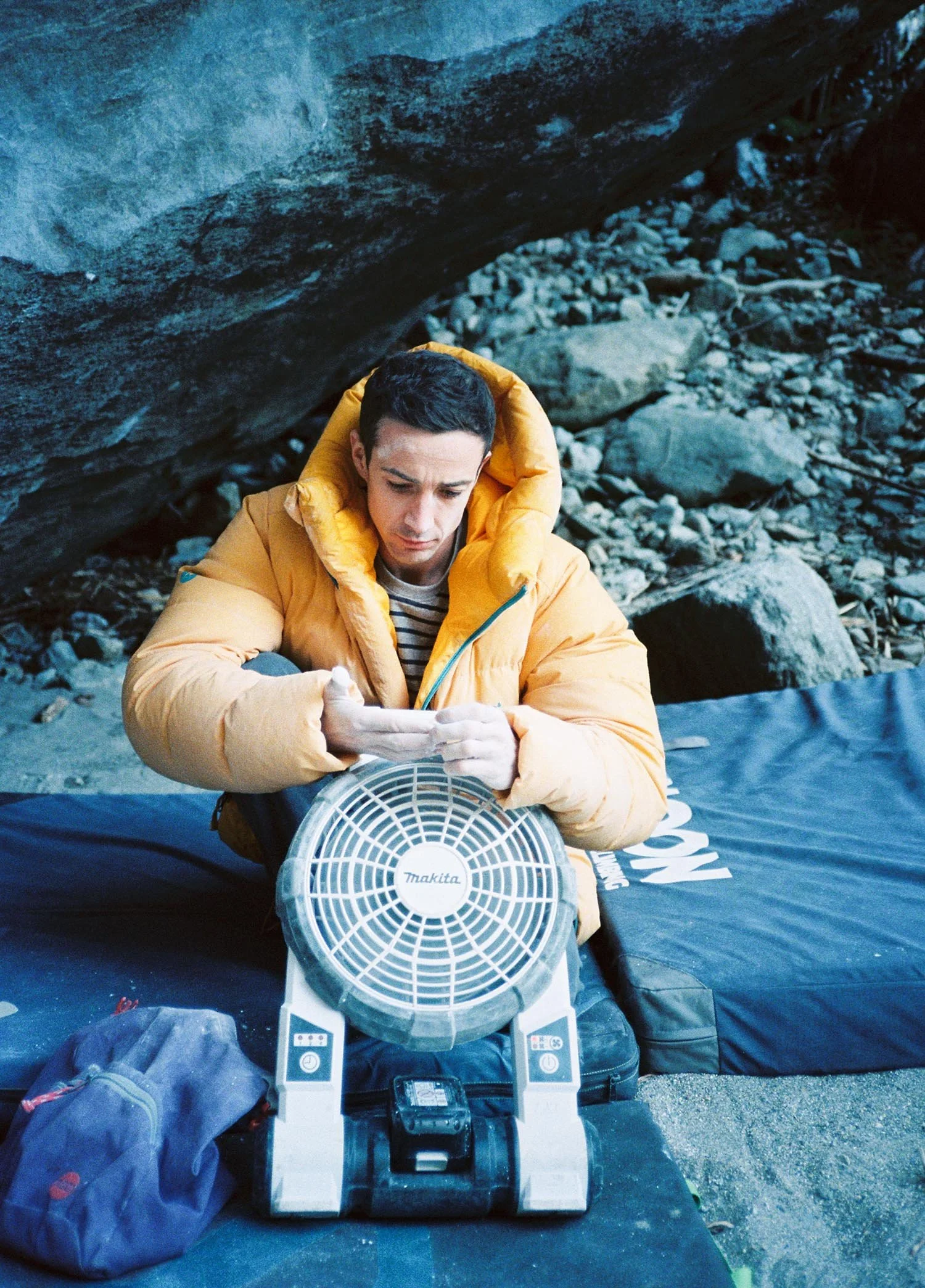The Subtle Art of Resting: Is it really that important?
Mismanaging rest during an outdoor bouldering session is one of the most common mistakes I see climbers make. As a generalisation, people don’t rest long enough, and it’s not even close. Of the hundreds of people I’ve worked with, maybe only a handful were guilty of resting too long during a session. It’s so common to see people rushing to repeat moves, or make links and simply burning out way too early into their session. But why is this lack of rest so crippling? Let’s break it down, and look at different strategies for resting during a session.
Resting for everything
Resting is not just for your muscles! It’s your skin, your brain and the rest of your body that also needs the rest. Constantly I see people complain about their skin ‘going so soon’ into a session, when what's really happening is it’s just heating up, and suddenly becoming much more prone to wearing. Hot and sweaty skin wears infinitely more quickly than cold dry skin. If you’re not resting adequately between goes, your brain doesn’t have time to process and learn from what happened during the last attempt. So in accepting that rest is important during a session, let’s consider how we can rest.
How to rest
It’s important to consider what we’re trying to achieve by resting, in order to work out how to rest. If we’re trying to rest to recharge our muscles and regain energy, then we need to be sure we’re keeping our body at a comfortable temperature. In the winter this might mean layering up and wearing our down jacket, and in the summer it might mean staying in the shade or finding a breeze to cool down. From here we can consider some water to stay hydrated, or some sugar to give our next attempt a bit of a boost. Personally I like some heavy hitting sweets at the crag just as a little kick for send goes. If we’re resting our skin, we might want to use a fan to keep it cool, or find a cold piece of rock to touch to take some of the heat out of our hands.
How long to rest
The big question, how long should we rest? Well, how long is a piece of string? Are you resting from individual moves, links or send attempts? What are the conditions like? Is the boulder more than 15 moves? How long is your session? There are so many variables here that for me to say ‘rest 10 minutes’ is totally pointless. There is of course the old faithful, rest 1 minute per 1 move climbed, and for sure that is a decent starting point. But it also depends on the moves completed, and how difficult they are for you. For example, on a single move near my limit, I might be resting 5 minutes between attempts, 5x longer than the ‘minute a move’ guideline. On a boulder where I fall on move 5 of 10, I might rest 6-7 minutes.
The important thing for me to impart here though is that a bit more rest is generally better than not enough. The best way I’ve found to make myself rest longer, especially during solo sessions, is to set a timer and be strict with it. I’ll also try and set the timer for a little bit longer than I think I need, so if I think I’ll need 5 minutes, I’ll put a 7 minute timer on. That way, by the time the timer goes off, and I’ve put my shoes on, brushed holds and chalked up, I’ve probably gained another minute or two’s rest.
Reading your body
But whilst using a timer to be strict, or a minute a move as a guide, I also think it’s really important to experiment yourself and understand what works best for your body. Sometimes a long rest, a warm up go, followed by a shorter rest and then another go can work well. On colder days, I rest much less as I need to keep my body temperature up. After certain length rests, I often re-warmup on some moves or a fingerboard. In the heat, I’ll be resting purely to cool my skin and waiting for it to feel optimal before going.
So finally, how do you know if you’re guilty of not resting enough? A few telltale signs are; your sessions are shorter than your peers, or you tend to have a few good goes on a climb and then that’s it, or that your skin overheats quickly. You can do all the moves on a climb quickly but then struggle to link them, is another classic example. But also, ask your friends what they think about your resting habits and seek out advice from others. But most importantly, acknowledge the need for the rest, and take more at every opportunity!
Eliot.

